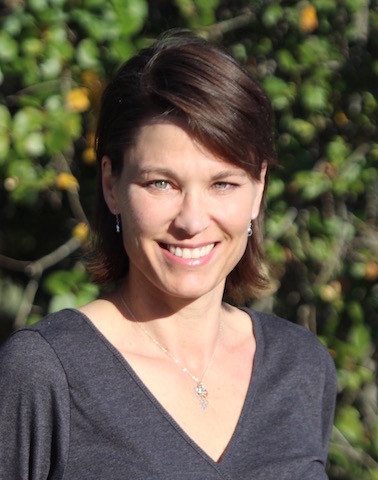SUBMIT. VOTE. WIN.
ENTRY FROM: 2016 Top Health Promotion Professionals
Nominee: Patty Purpur de Vries
Expanding the Value of Wellness within Our Organization
In 2011, Stanford Health Care and Stanford Children's Health (formerly Lucile Packard Children's Hospital) worked together to create a shared employee wellness program called HealthySteps. In 2013, the program consisted of an on-line health risk assessment, on-line tools, two large wellness events and in-person biometric screenings for 8,500 eligible employees. An unexpected turnover in management lead Wes Alles, the Director of the Stanford University Health Improvement Program to ask me to step in as the Interim Wellness Manager for 6 months. Although I had never worked in a health care setting, I made an impact by using my business and wellness background to expand the program reach, collaborate across departments and include a broader segment of the workforce. Three years later, I’m still working within Stanford Medicine and have just accepted a leadership role within the new Stanford WellMD Program to work directly with 2400 Stanford Medicine physicians. Due to my cultural successes within Stanford Medicine and as the Director of the Stanford Health Promotion Network, I hope to be included in the list of WELCOA’s Top 100 Wellness Professionals for 2016.

Patty Purpur de Vries
Professional Development
I grew up in Grand Forks, North Dakota and in 1985 I was offered a full athletic scholarship to Stanford University. I earned NCAA All-American status nine times, won the National Collegiate Weight Lifting Championships in Olympic weight lifting, participated in the 1989 Olympic Trials for discus and graduated with a BA in Psychology in 1989.
In 1997, with only $50 for business cards, I founded my own company offering consulting and fitness center management services to clients who would include Google, Yahoo!, Cisco, Safeway and KLA-Tencor. By 2008, my company, TimeOut Services employed over 100 people and earned annual revenues of over $5 million.
In 2009, I sold my company, including my trademarked Community BootCamp program to Plus One of New York (now Optum). After the sale, I published a book, The Soft Side of Success, and continued to volunteer my time within the Medical School at Stanford University. In 2008, I co-founded the Stanford Health Promotion Network as a volunteer and eventually accepted an employment offer from Stanford University as the Director of the Stanford Health Promotion Network (SHPN.Stanford.edu). In 2014, at age 49, while supporting the hospital wellness program, I went back to school to earn a Master of Science in Health Promotion Management from Nebraska Methodist College. Earlier in my career, I also completed the UCLA – Anderson School of Management: Management Development for Entrepreneurs’ Program and the Young Entrepreneurs’ Organization Stanford University Executive Program.
Demonstrated Success
When I accepted the position as Interim Program Manager of the HealthSteps program the goal for biometric completion was 50% and the program boasted 32 Wellness Champions. Within 18 months, our team increased biometric screening participation to 78% of the eligible population, increased the Champions network to over 1200 and added several new programs and events including the Grant Program, Wellness-Infused Team Trainings and our annual Compassion Fair. With support of the Director of Occupational Health Services we convinced leadership to expand the eligible population for all non-financially-incentivized wellness offerings. Soon the Champions Network, Grants and Wellness-Infused Team Trainings were expanded to include 3000 union nurses and over 2,400 physicians. In early 2016, I accepted the position of Director of Strategic Projects for the Stanford WellMD Center where I support the programs and lead the wellness strategies for over 2400 Stanford Medicine Physicians while continuing to support the HealthySteps Program and the Stanford Health Promotion Network.
Leadership
In my dual leadership role, I create vision, shape strategies and constantly engage the organization using a collaborative and empowering style. Because I am always seeking best practices from multiple industries, I have built a broad and diverse network of wellness colleagues who I call upon and involve in my work. I enjoy creating high energy programs and events that build community and encourage cooperation and improvement throughout the Stanford Community and within our industry. As the Director of the Stanford Health Promotion program, I offer educational and networking opportunities to our 65 organizations, which include Apple, Cisco, Kaiser Permanente, Blue Shield, the County of Santa Clara and others. Network members openly share ideas and support each other to enhance all our programs. In my new role as Strategic Project Director, I worked closely with other WellMD leaders to create an organizational model of wellness and professional fulfillment which has been submitted for publication. This model is quickly being recognized by other national leaders in the Physician Wellness field and is being used to shape national thinking and unify strategic action to improve physician wellness.
Innovation
When I began supporting the Stanford Medicine community, I reviewed the program, the organizations’ mission, vision, and values in order to strategically alter the program both from the top and from the front lines. I learned there was a lack of trust in the program and knew that was the very first thing that needed to be improved. With what I thought was only a 6-month window of opportunity, I took a risk by unilaterally choosing a tagline to represent my desired outcome for the program: HealthySteps: Building a Culture of Care for Patients and Employees. I felt that if I asked for permission or input on the tagline, we would be finessing it months later. I used the tagline on the website, in all my presentations, on e-mail messages and on every message to the growing number of Wellness Champions. Most importantly, I passionately set out to make the culture of care a reality in everything I touched. I was frustrated to learn that the nurse’s union had negotiated out of the wellness program and that the Physicians were only eligible for a separate university wellness program called BeWell and were not included in any of the HealthySteps program offerings in 2013. I knew that while the incentives were a main focus of the program in 2013, ultimately, there is a higher purpose to a well-run wellness program. I also knew that employees rarely stay in a job because of the financial incentives and that the only lasting way to transform the culture is to create a positive and supportive work environment for all employees. To include both the nurses and the physicians, I set out to extend membership of the Champions Network to all employees and volunteers and to launched the HealthySteps Grant Program that is available to anyone who works within the hospital system. Our very successful Grant Program quickly brought in over 240 grant applications providing us with deep insights into the needs of our hospital employees. Requests for filtered water, team-based classes, stretch breaks, yoga classes, walking groups and breakroom makeovers were just of few of the ideas that were generated by the hospital employees. Our team worked with facilities and other departments to give eight $500 grants with more in the future.
Compelling Vision
The new Stanford Medicine wellness model expands the vision of wellness to include not only personal resilience but also to build a culture of wellness and organizational efficiency of practice. This model embraces the idea that not only are individuals responsible for their health and wellbeing, but the organization also has a significant role and responsibility. My vision is that the organization that embraces its role and responsibilities to build and resource an organizational infrastructure that enables preeminent wellness at Stanford in its community. Strategically I will work to accomplish this by focusing on the growth and development of our new WellMD program, continued collaboration with HealthySteps and expanding the integration and collaboration of both programs. Additionally, I will continue to utilize my Stanford University BeWell and Health Promotion Network colleagues and to build collective wisdom and generate best practices. My hope is that together we generate programs and interventions that improve the wellness of our populations and community.
In early 2016, I actively recruited my replacement, HealthySteps Program Director, Charelle Fernandez, who is an inspiring leader and had worked for my company (now Optum) for many years. My vision is to continue to collaborate with Charelle and her program, create new offerings and build on the work that was started in 2013 for all of Stanford Medicine. I believe that for too long, we have cast the blame of disease and ill health on each individual instead of broadening our view and seeing the impact of the work environment and culture on our employees’ health. The model takes into account the need for wellness to be included in management & leadership trainings and in seeing the positive or negative impact of operations on individuals at all levels of an organization. Think of the last time your e-mail server went down or your paycheck was delayed. As an organization we have the responsibility to do all we can to allow our employees to focus on their responsibilities by keeping operations running smoothly. I am inspired to teach the wellness-infused team trainings for the HealthySteps program, contribute to the Stanford University BeWell Program, oversee the content of the Stanford Health Promotion Network, create research based interventions for the Stanford Medicine WellMD Center and broaden the collaboration and outreach of all of these programs.
You can vote as often as you like. You may vote once per hour per entry.
When you come back, use the search function to find this entry.
You can vote as often as you like. You may vote once per hour per entry.
When you come back, use the search function to find this entry.





Comments are in order of newest to oldest
Patty Purpur de Vries is the Queen of Workplace Wellness - and is featured in my book Workplace Wellness That Works as an example of a visionary well-being leader. Specifically, Patty is, hands-down, the most capable "get it done" and do it with a smile and tons of love, than ANY well-being leader out there. She is an early WOMAN entrepreneur in the space, who successfully sold her business, and now is teaching the rest of how to do it right.
Laura P. on 12/02/2016
Post a Comment